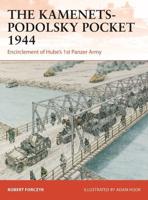Publisher's Synopsis
During October 1967, the United States appeared to be making slow but steady gains against the Viet Cong insurgents and their North Vietnamese allies who were attempting to destroy the South Vietnamese government. Army General William C. Westmoreland, the chief of the U.S. Military Assistance Command, Vietnam (MACV), expected to get even better results in the coming year as more U.S. combat units joined his command, raising its maximum authorized strength to 525,000 personnel. MACV advisers continued to modernize the South Vietnamese armed forces and the effort to expand government authority in the countryside appeared to be gaining traction. The enemy was suffering enormous casualties and many of his troops were afflicted by malnutrition and disease. Hammered from the air by B-52 bombers and disrupted by allied ground sweeps, the Viet Cong base areas in South Vietnam were no longer the safe havens they once had been. Despite these gains, however, MACV's mission was far from complete. The enemy was disciplined and resourceful, sustained by a constant flow of arms and men from North Vietnam down the Ho Chi Minh Trail through Laos and guided by a party that was ruthlessly committed to national reunification on its own terms (see Map 1). Knowing that the American people were unwilling to support a costly and protracted war, which already had cost the lives of more than 15,000 Americans, Westmoreland keenly felt the need to accelerate his progress in 1968 "on all fronts-political, military, economic, and psychological."










